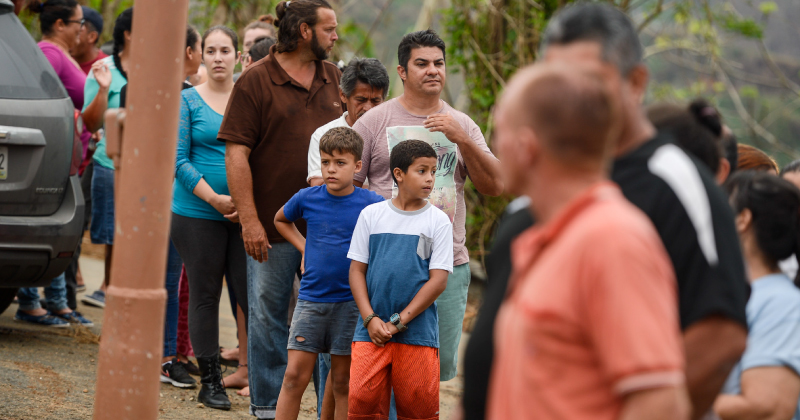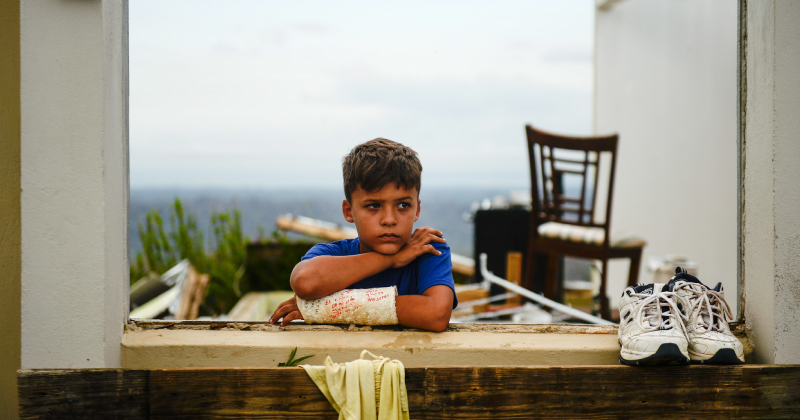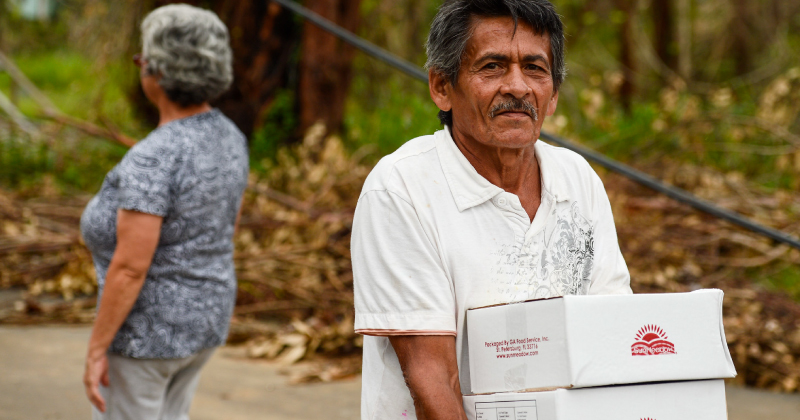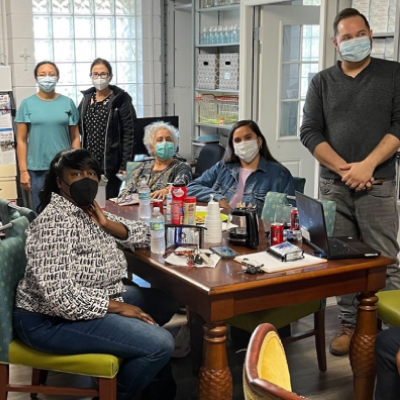- Who We Are
- Clinician Employment
- Publications
- Witness to Witness (W2W)
- Kugel & Zuroweste Health Justice Award
- Your Voice Matters: Photovoice Project
"US and Global Infrastructure is Unprepared and Unwilling to Prepare for the Increase in Migration" -- Four Critical Strategies to Take On Climate Migration
Thu, 03/10/2022 | by MCN Admin


What is the IPCC?
The Intergovernmental Panel on Climate Change was initiated by the United Nations and the World Meteorological Organization in 1988. Since then, it has regularly reported and assessed the science relating to climate change based on rigorous science. Its reports are collaborative, developed by scientists from across the world and peer reviewed. The IPCC won the Nobel Peace Prize for its work in 2007. This month’s report is part of the Sixth Assessment Report. In September 2021, the IPCC released its update on the physical science basis as part of the Sixth Assessment Report. Upcoming additional reports as part of this latest assessment include an April 2022 report on mitigation of climate change and a September 2022 synthesis of all the reports.
Last week, 270 leading scientists from 67 countries released an illuminating and damning 3,675-page report on climate change and impacts, adaption, and vulnerability. The scientists provided their expertise as members of a working group of the Intergovernmental Panel on Climate Change (IPCC) as part of their Sixth Assessment Report. United Nations Secretary General Antonio Guterres described this latest report as “an atlas of human suffering.” The report itself is thick with dire assessments of the planet’s current state and the devastating path ahead, and concluded its summary by declaring, “the cumulative scientific evidence is unequivocal: Climate change is a threat to human well-being and planetary health. Any further delay in concerted anticipatory global action on adaptation and mitigation will miss a brief and rapidly closing window of opportunity to secure a livable and sustainable future for all.”
In 2021, almost 90 million people worldwide were forced to leave everything behind, despite the travel restrictions of the pandemic. The number of forcibly displaced is record shattering. Here in the US, 1.7 million people were detained at the US-Mexico border last year, although the figure may be inflated because of “repeat encounters,” those attempting to cross after an initial crossing failed. Many were fleeing violence and economic instability directly or indirectly linked to climate change. A majority of migrants were immediately turned away, despite their requests for asylum.
US and global infrastructure is unprepared and unwilling to prepare for the increase in migration that we are already seeing, and the massive rise in migration on the horizon as climate change progresses. Here are four ways to respond to the growing and correlated crises of climate change and migration:

1. The overwhelmed and immoral asylum system in the US needs an immediate overhaul.
Asylum seekers have a right to ask for asylum, as declared in Article 14 of the UN’s Universal Declaration of Human Rights. But throughout the pandemic, the US has used Title 42, a law interpreted to allow denial of entry under the guise of reducing the spread of COVID. This week, a federal appeals court issued a ruling that prevents the Biden Administration from continuing to deport people into danger through Title 42. However, other avenues to deport asylum seekers to Mexico to await their hearing, like the Migrant Protection Protocols, are still in effect. For those who do manage to successfully request asylum, they discover that their hearings are often many years away. While they wait in the US, their immigration status is unclear and they are not eligible to work or apply for programs, or have delays in their status adjustments that, as new immigrants trying to rebuild a life after fleeing their homes and their communities, they may desperately need.
The IPCC indicates the confidence with which they issue their statements, based on the available data and their experts’ analysis. Here are a few quotes from the recent summary for policymakers:
“Human-induced climate change, including more frequent and intense extreme events, has caused widespread adverse impacts and related losses and damages to nature and people, beyond natural climate variability. Some development and adaptation efforts have reduced vulnerability. Across sectors and regions the most vulnerable people and systems are observed to be disproportionately affected.”
“Future human vulnerability will continue to concentrate where the capacities of local, municipal and national governments, communities and the private sector are least able to provide infrastructures and basic services (high confidence).”
“Key infrastructure systems including sanitation, water, health, transport, communications and energy will be increasingly vulnerable if standards do not account for changing climate conditions (high confidence).”
“Through displacement and involuntary migration from extreme weather and climate events, climate change has generated and perpetuated vulnerability (medium confidence).”
“Vulnerability of ecosystems and people to climate change differs substantially among and within regions (very high confidence), driven by patterns of intersecting socio-economic development, unsustainable ocean and land use, inequity, marginalization, historical and ongoing patterns of inequity such as colonialism, and governance31 (high confidence). Approximately 3.3 to 3.6 billion people live in contexts that are highly vulnerable to climate change (high confidence). A high proportion of species is vulnerable to climate change (high confidence). Human and ecosystem vulnerability are interdependent (high confidence). Current unsustainable development patterns are increasing exposure of ecosystems and people to climate hazards (high confidence).”
2. Climate migration is growing and policy needs to expand to recognize our new reality.
When two back-to-back Category Four hurricanes slammed into Central America in the fall of 2020, the region was already experiencing extreme poverty, political instability, and high levels of gang violence. Tens of thousands of small farmers and subsistence farmers were wiped out. Tens of thousands more were left homeless or lost most of their possessions in flooding. Infrastructure has been weakened or destroyed. Many people in the US have questioned why rural residents who have lost their livelihoods don’t move to local cities to find work, but these local cities, already wracked by gang violence and poverty, provide few opportunities for a safe resettlement. In fact, preexisting conflicts and pressures like gang violence and poverty are intensified when climate-fueled disasters strike. Newly arrived populations only further pressurize those concerns.
As a result, many of those affected by the hurricanes decided to flee to the US. Yet, climate migrants are not protected under international human rights law, which was established long before the climate began changing. Here in the US, asylum is denied to those who ask for it solely based on displacement due to a climate disaster. Many of those fleeing the hurricanes were also fleeing growing violence and conflict in the wake of such disasters. As the climate crisis progresses, however, laws must be amended to consider the environmental stressors that make life untenable after a disaster.
3. Migration increases instability, whether inside the country or outside of it, so it’s most cost effective to ensure climate stability to reduce migration.
The climate crisis does not affect only the poorest among us, although the effects of global warming will bear down hardest on those who are already in positions of precarity. The IPCC clearly outlines that migration increases overall instability. This includes greater instability for the migrants themselves, as well as for the areas losing and gaining residents. And, in a terrifying feedback loop, an area that finds itself less stable because of migration will be more vulnerable to climate impacts. One could interpret this by stating that such destabilization is reason itself to continue to keep US borders largely closed, despite international law. However, as climate change is progressing, more and more migrants are from within the borders. After devastating wildfires across the West, thousands of people were forced to flee. In the last two years, hurricanes have threatened the lives of people across the entire Eastern Seaboard. Thousands of Puerto Ricans remain on mainland US after climate-strengthened Hurricanes Irma and Maria disrupted livelihoods and decimated infrastructure. The word “unprecedented” has been attached to floods, fires, hurricanes, tornadoes, drought, heat waves, and winter storms, all within our borders. Closing our borders does not stop climate migration and the associated instability. The only way to cut off climate migration is to reduce the level of global warming that will occur.
In the long term, the more efficient, less expensive, and more humane way to address the upcoming increase in migration both at the border and in climate-pressured regions in the US is to address the climate crisis to prevent massive destabilization in the first place. While the planet is already rapidly warming, causing climate changes that are already affecting millions of people, the worst of the climate crisis can still be prevented. We, the people – through our personal action; through pressure on the corporations where we work, in which we invest, and with whom we do business; by pursuing solutions within the communities where we live and work; and by voting for climate leaders and requiring those leaders to follow through with their promises – must demand reductions on all fronts, and rapidly.

4. The US needs to build new infrastructure to prepare for increases in migration.
Simultaneously, the US needs to rapidly prepare for the migration that will continue as areas become less stable.
Refugees, who have a recognized status from the US government upon arrival, are brought into various refugee programs to help them get their basic needs met, like housing, community connection, and health care. But asylum seekers – those who are so desperate and in fear that they abandon their homes, communities, and safety net in hopes of finding safety often thousands of miles away – do not have such programs available to them. In addition to an overhaul of the asylum system, new avenues of care and connection must be developed to support the growing number of asylum seekers.
Global Warming Vs. Climate Change
Global warming is the increase in average temperature that has resulted from the increase in concentration of greenhouse gases in the Earth’s atmosphere. Climate change is the result of global warming: because of this increase in average temperature, the climate is changing – from more powerful hurricanes to unprecedented droughts and heat waves. To stop climate change, we must stop global warming, by drastically cutting emissions of greenhouse gases and developing sinks to pull carbon dioxide out of the atmosphere.
Migrant Clinicians Network operates Health Network, a virtual case management program that has stepped into the huge and troublesome gap in care for asylum seekers. When a pregnant woman asks for asylum at the border, she may be released into the country to await a court date, but without any prenatal care while in detention, and with no connection to her new community’s health centers or other health programs for which she and her newborn may be eligible. MCN’s partners at a major immigration shelter provide basic prenatal care, and then the expectant mother is enrolled in Health Network. A Health Network Associate can then help the asylum seeker find care at her next destination, identify and sign up for eligible programs like sliding scale fees, and, critically, support the asylum seeker in a culturally competent manner during a precarious and often frightening period in her life. Luckily, such infrastructure is getting attention and promotion. The World Health Organization recently released a report detailing the critical need for access to health care for noncommunicable diseases and the migrant-specific barriers that must be overcome via international action. MCN applauds such efforts and looks forward to working closely with national and international partners to increase infrastructure to reduce migrant health inequities and increase access to care for asylum seekers and other migrants.
Migration isn’t going away. Climate change isn’t either. How we collectively address these two concerns in the coming months and years will determine whether we will have more of these two things – and the human suffering, economic damage, and ecological devastation that come with them – or less. And, as the IPCC report makes abundantly clear, climate change isn’t waiting. Action on global warming is only effective if it begins immediately.
Got some good news to share? Contact us on our social media pages above.
Return to the main blog page or sign up for blog updates here.







